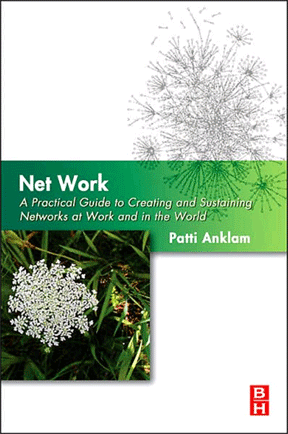The Net Work of Leadership: Create the Space
My book, Net Work, is four years old. I was asked, recently, if it was still “authoritative” or if there were newer works. I responded that I believe that it is still valid, especially since I only presaged the onslaught of social media and did not talk about particulars. (Good thing, as Twitter had hardly been invented, and I’d not even tweeted my first when the book actually came out in April of 2007.)
My current work is leading me back to the last chapter of Net Work, with prescriptions for leadership. The original prescriptions:
- Network intentionally
- Practice network stewardship
- Leverage technology
- Create the capacity for net work
- Use the network lens and net work tools to enhance the lives and contributions of individuals and the collective power of the network
For each of these, I provided additional observations, examples, and techniques to develop on and follow. In re-reading this chapter, I find nothing that I would change, but much that I would add to, or amplify. These amplifications will inform my blogging for the next little while.
I was particularly inspired this morning by reading JP Rangaswami this morning and his five principles for the workplace of the “Maker Generation in the Enterprise.” (Thanks to @jackvinson for the tip.) The gist of the principles embody, for me the real truth about leadership in an age of networks, though JP uses the language of teams, rather than the network. Principle #3 is:
3. True team-based work will become the norm, not the exception.
JP says, Work is normally carried out by people in multiple parts of the organisation, belonging to different departments, putting to use their disparate skills. The “team”, in practice, is distributed across different departments, functions, locations. This is, to my thinking, actually the organizational network rather than a team.
In principle #1:
1. The person will select the “task,” rather than being given the “task.”
What he says is (and I agree) is that it makes no sense to give smart people tasks, but to “expose them to problem domains and then giving them the resources and tools to solve these problems.” When a problem domain is large, it takes a network, more than just a team, and the vision of a leader who can create the spaces within which people will make the right choices about what tasks they must select to work toward the solution of the problem.
Oddly, this characterization made me think about my first career, as a technical writer. Although organized into a team, we had to work as part of a much wider network to solve the problem: make a very complicated computer operating system and all its utilities comprehensible to those who needed to use it. I was not told how to write or even what, exactly to write. I was provided with tools, some general deadlines, and given the space to work through, on my own and in collaboration with others, what form the result would take (some set of manuals, targeted at different audiences with different purposes, that would ultimately need to be printed, packaged, distributed by some other part of the organization) and how to specify our own tasks.
So the leader must frame the problem domain, and know which parts of the network — individuals, groups, and maybe even teams — need to be activated, engaged, and connected. The net work of the leader is to create and sustain the space that enables all these parts of the network to come together to collaborate. JP says of the enterprise: The most precious asset of the knowledge-worker enterprise is the knowledge worker, her human and social capital, her relationships and her capabilities. I think it is also the work of leadership to ensure that knowledge workers have the capacity for using their relationships in the network, and for the social capital of the enterprise itself.


